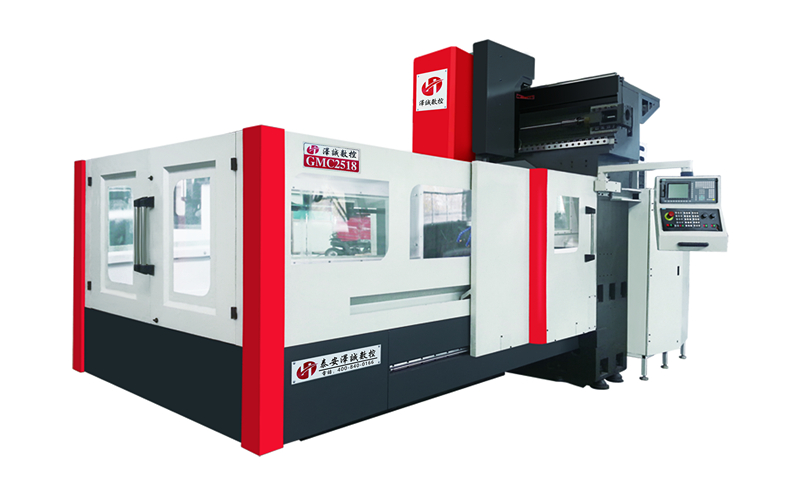CNC machine tool is an automated machine tool with high education, precision, and adaptability for processing complex curves and spatial hole systems. It has high requirements for the rigidity, accuracy, thermal profile, cutting ability, stability of the machine tool, as well as the response speed and automatic monitoring of the CNC system. With the continuous development of information technology and digital technology, its performance and efficiency are also constantly improving.
The gantry machining center is mainly used for machining flat surfaces, holes, and other complex surfaces. The overall layout of the gantry type can be divided into two types: fixed gantry (workbench movement) and movable gantry (gantry frame movement), and its structural form can be divided into two types: fixed beam and movable beam. This article first compares the gantry movement type with the workbench movement type.
The worktable mobile CNC machine tool, also known as the fixed gantry CNC machine tool, is driven in the X-direction by a DC or AC servo motor through components such as worm gears, ball screws, and gear racks. This shipowner form can be used on machine tools of different lengths and requirements. The two straightness of the workbench movement is determined by the accuracy of the guide rail. This type of fixed gantry CNC machine tool occupies twice the area in the X-direction of larger machining workpieces, excluding the length of protective covers on both sides, so the occupied area is relatively large.
The movement mode of worktable in mobile CNC machine tools can be divided into two types: dynamic friction and static friction. In dynamic friction, there are linear guide rails with pre loaded balls and rollers, rolling body guide rails, and combined composite guide rails with rolling and sliding. Among them, linear guide rails and rolling body guide rails are more suitable for light load high-speed cutting. In the rolling and sliding composite guide rail, the rolling part plays a role in controlling the accuracy of linear motion, while the sliding part plays a load-bearing role, effectively improving the load-bearing capacity of the workbench. Compared with the linear guide rail and rolling guide rail, it has a certain impact resistance. With the development and innovation of cutting tools, as well as the transformation and updating of machining process concepts, high-speed and light load machining methods are currently flourishing. Static pressure guide rail belongs to the form of static friction, which has the characteristics of heavy load and no friction, and has strong impact resistance when loading and unloading workpieces. However, it is greatly affected by temperature factors, and the manufacturing process is relatively complex and costly.
In terms of structure, the gantry type of workbench movement adopts the method of overall frame connection, which has certain requirements for the installation foundation. Most of the weight is pressed in the middle position, especially in the position of the two pillars. Under the influence of temperature, the two columns will tilt back or forward, and in the overall connected state, it will simultaneously affect the machine bed, causing changes in the accuracy of the machine bed. Empirical data shows that a temperature change of 1 ℃ can affect the accuracy of 0.01mm over a length of 1m. Therefore, when processing products with high precision requirements in the vertical plane, it is necessary to frequently adjust and inspect the machine tool when the temperature difference is large due to seasonal changes. After the machine tool bed is deformed, the movement of the workbench on it is a deformed curve rather than a straight line, and the straightness of the processed product is also consistent with the deformed curve, Although the Z-axis can be compensated through CNC technology, it is not the fundamental solution.
Therefore, the worktable of the gantry moving machining center has a large load-bearing capacity and is not affected by the impact of upper and lower workpieces or other factors that interfere with deformation. The advantages of this are small footprint, convenient workpiece clamping, and the ability to process workpieces according to the actual effective length of the worktable. The factors affecting the machining accuracy of the moving gantry machining center of the workbench involve a wide range of factors, and there is some interference with each other during adjustment. However, due to its overall structure, it has relatively good stability, and the accuracy of the processed products is guaranteed to a certain extent.




